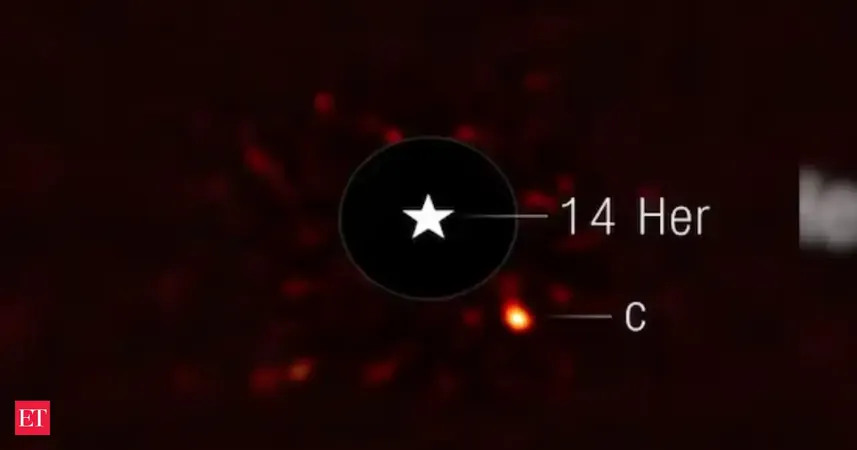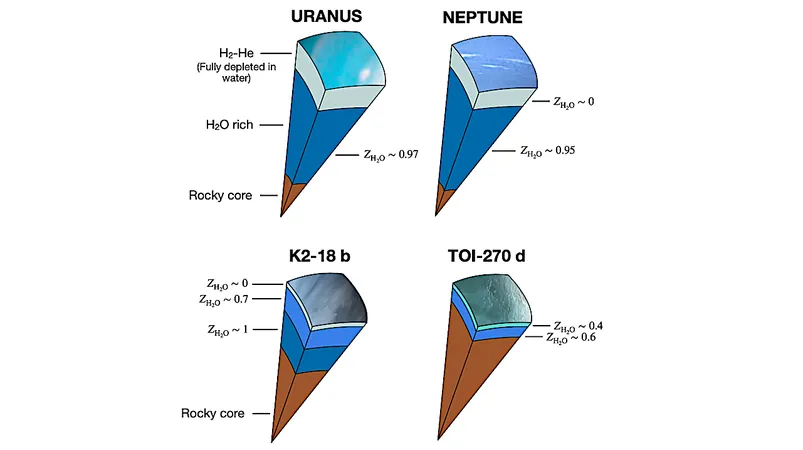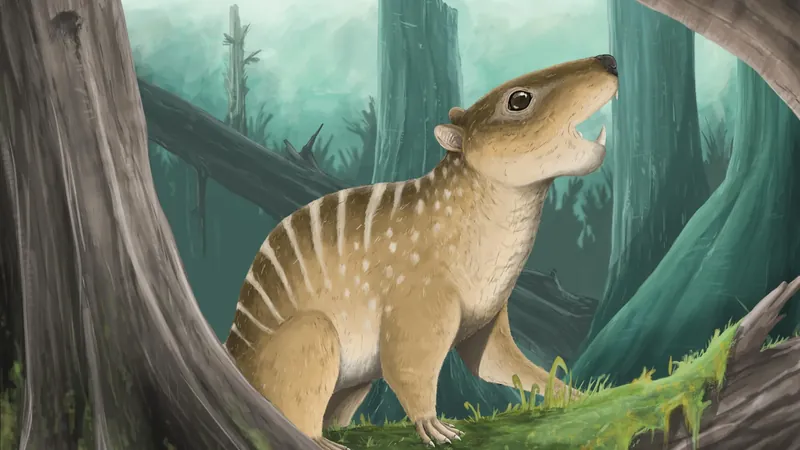
NASA’s Webb Captures Mysterious Cold Giant Planet: Why It’s a Game-Changer for Astronomy
2025-06-15
Author: Jacob
A Chilling Discovery in the Cosmos
NASA's James Webb Space Telescope (JWST) has achieved a remarkable feat by capturing a direct image of the icy exoplanet, 14 Herculis c, located an astonishing 58 light-years away in the constellation Hercules. This massive gas giant doesn't conform to the norms of our solar system; instead, it orbits its star in a chaotic 'X' formation, sparking curiosity among astronomers.
A Frigid Giant Like No Other
At a mere -3°C, 14 Herculis c is one of the coldest exoplanets ever observed. Unlike most exoplanets, which are generally hot and young, this planet is about four billion years old and boasts a mass seven times that of Jupiter—making it a heavyweight in the cosmic arena. Its vast orbit is approximately 1.4 billion miles from its star, yet it appears only as a faint orange dot in JWST's images. Intriguingly, its dimness has caught scientists off-guard.
Unusual Orbital Dynamics
This planet’s orbit is the real spectacle. It resides in a system with two planets that orbit their star at sharply different angles, forming an intricate X-pattern instead of the circular orbits typical of our solar system. "This indicates a tumultuous past – a planetary 'crime scene' that has strong implications for the evolution of our own solar system," states William Balmer, a graduate student and co-author of the study.
The Cosmic Tug-of-War
Scientists speculate that the erratic orbits might be the result of a third planet that once existed but was expelled from the system during its chaotic formation. This left 14 Herculis c and its companion locked in a long-term gravitational struggle, revealing the influence of larger celestial forces on smaller planets like Earth.
Atmospheric Mysteries Uncovered
Using JWST's advanced instruments, astronomers detected traces of carbon dioxide and carbon monoxide in this planet's atmosphere. Notably, 14 Herculis c behaves more like a brown dwarf than a typical planet, as it lacks the methane that would usually dominate at such low temperatures. Instead, carbon compounds appear to be forming in warmer layers, continuously rising to the cold upper atmosphere, creating a unique atmospheric composition.
Pushing the Boundaries of Planetary Science
This discovery is groundbreaking for exoplanet research, especially as JWST opens the door to studying cold, older giants that were previously beyond our observational capabilities. As Balmer puts it, "It's a game-changer for our understanding of planetary systems and how they evolve. We want to understand the historical chaos that shapes them."
The Bigger Picture
The findings from JWST have been accepted for publication in The Astrophysical Journal Letters and showcased at the American Astronomical Society's meeting. What we're learning about 14 Herculis c goes beyond just one distant exoplanet; it offers a glimpse into the chaotic dance of planets that could unravel the mysteries of how systems like our own come to exist. Could Earth's stability be a result of surviving an ancient celestial turmoil? With JWST's innovative insights, we are beginning to grasp the true nature of our cosmic neighborhood.









 Brasil (PT)
Brasil (PT)
 Canada (EN)
Canada (EN)
 Chile (ES)
Chile (ES)
 Česko (CS)
Česko (CS)
 대한민국 (KO)
대한민국 (KO)
 España (ES)
España (ES)
 France (FR)
France (FR)
 Hong Kong (EN)
Hong Kong (EN)
 Italia (IT)
Italia (IT)
 日本 (JA)
日本 (JA)
 Magyarország (HU)
Magyarország (HU)
 Norge (NO)
Norge (NO)
 Polska (PL)
Polska (PL)
 Schweiz (DE)
Schweiz (DE)
 Singapore (EN)
Singapore (EN)
 Sverige (SV)
Sverige (SV)
 Suomi (FI)
Suomi (FI)
 Türkiye (TR)
Türkiye (TR)
 الإمارات العربية المتحدة (AR)
الإمارات العربية المتحدة (AR)